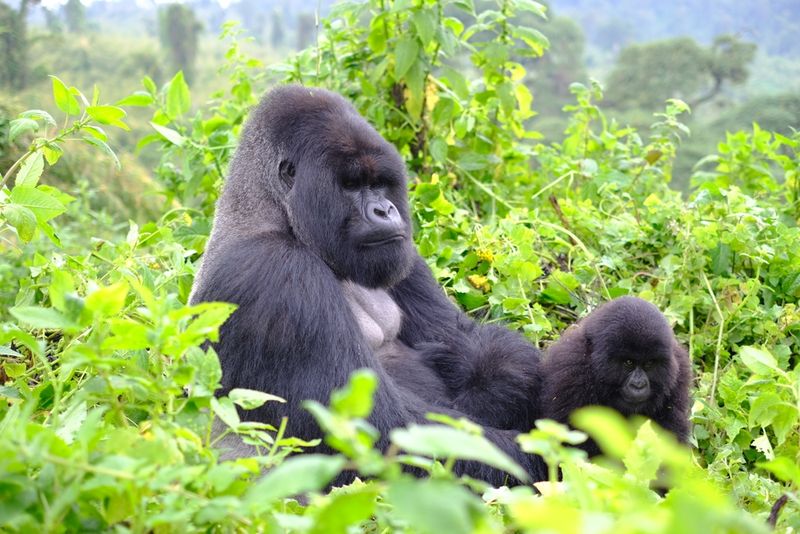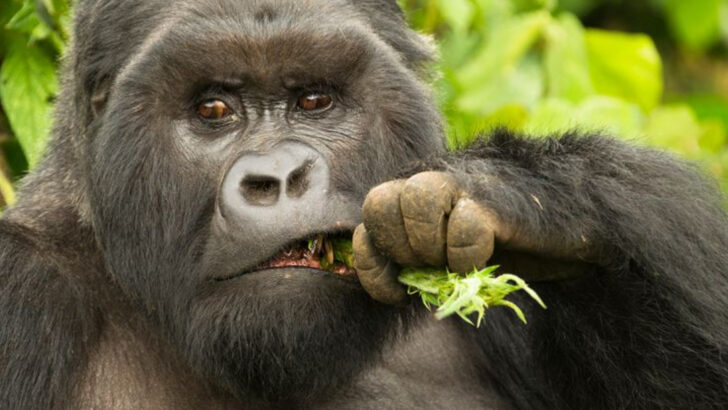A gorilla could tear through your gym in seconds—and not break a sweat.
We’re talking pure, jaw-dropping, spine-tingling strength packed into a frame built for power. These creatures aren’t just strong—they redefine what strong means. One casual arm swing from a silverback could send you flying like a paper plane.
But where does all that power come from? It’s not just muscle. It’s nature’s blueprint for survival, territory, and dominance. Gorillas weren’t designed to lift weights—they were made to rip through vines, climb mountains, and settle disputes without a second warning.
Think your deadlift is impressive?
Let’s put that next to a primate who can lift over ten times their own body weight… casually.
Let’s explore the wild, awe-inspiring strength of gorillas—and why it’s way more than just brute force.
Muscular Build

Gorillas have an impressive muscular build that sets them apart. Their powerful arms, significantly longer than their legs, allow them to swing with ease from branch to branch. This adaptation is crucial for their arboreal lifestyle. The muscles in their chest and arms contribute to immense strength, enabling them to lift heavy objects and defend their territory.
Interestingly, a gorilla’s physical prowess doesn’t just lie in its size. It’s the dense muscle fibers that give them an edge. These fibers are packed tightly, providing explosive strength.
This unique muscle composition is key to their survival in the wild.
Diet and Nutrition

A gorilla’s diet is a critical factor in its strength. Feeding primarily on vegetation, such as fruits, leaves, and stems, provides them with the necessary calories and nutrients to maintain muscle mass. The fibrous nature of their diet requires strong jaws for chewing.
The vitamins and minerals from their plant-based diet contribute to overall health and vitality. Unlike humans, gorillas can extract maximum energy from their food thanks to their specialized gut flora.
This efficient digestion system allows them to sustain their energy levels, supporting their muscular build and active lifestyle.
Genetic Makeup

Genetics play a pivotal role in a gorilla’s strength. These animals possess a unique genetic makeup that predisposes them to be stronger than many other primates. Their DNA influences their muscle development and overall physical form.
Research has shown that specific genes in gorillas are linked to muscle growth and repair. This genetic predisposition enables them to develop muscles more effectively.
Furthermore, their hormonal balance, particularly testosterone levels, contributes to muscle mass and aggression, vital for survival and dominance in their social structure.
Social Structure and Behavior

The social structure of gorillas is a fascinating aspect of their lives. Living in groups, known as troops, they rely on strength for protection and leadership. The dominant male, or silverback, showcases impressive strength to maintain order and protect the group.
Their behavior includes play-fighting, an activity that strengthens muscles and social bonds. These interactions are crucial for young gorillas to learn necessary life skills.
The social dynamics within a troop foster a sense of unity, with strength playing a critical role in their survival and cohesion in the wild.
Habitat and Adaptation

Gorillas are well-adapted to their natural habitat, which is both a source of strength and a challenge. Their environment demands physical prowess to navigate dense forests and mountainous regions.
Adaptations such as strong limbs and dexterous hands allow them to climb, forage, and build nests. This physical capability is essential for finding food and seeking shelter.
Their impressive strength is a response to the environmental demands they face daily, ensuring they thrive in the ever-changing landscapes of the African jungles.

